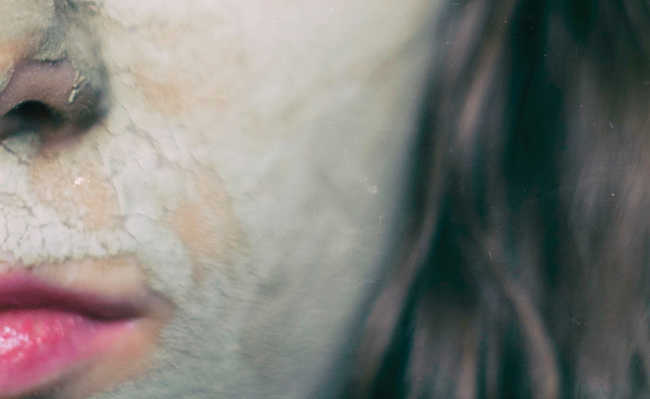Candidiasis in men: what it is and how to treat it
Candidiasis in the penis is easy to treat, but if the man does not pay attention, it can develop into a serious condition.

Resized image by Francisco Gonzalez, is available on Unsplash
Little is said about candidiasis in man, but the fungus Candida albicans, which causes candidiasis, can affect anyone, in many regions of the body - including the penis, the vaginal mucosa, the oral tract, the skin and the intestine.
- Candidiasis: know causes, symptoms, types and know how to treat
If left untreated, candidiasis in the penis can cause painful, uncomfortable, and often embarrassing symptoms. It can also lead to serious complications if the infection spreads into the bloodstream.
What are the symptoms of candidiasis in men?
The first symptoms of a thrush on the penis include redness, and sometimes scattered white spots in the penile region.
The skin of the penis is often moist and a thick white secretion starts to ooze under the foreskin or other skin folds. There may also be itching, burning, and flaking on the skin of the penis.
Redness, itching, and penile pain can also be signs of other more serious conditions, including some sexually transmitted diseases (STDs); therefore, don't ignore symptoms when they appear. A urologist or your GP can diagnose the condition, usually in a single visit.
What causes candidiasis in men?
Candidiasis in man is caused by the fungus Candida albicans. This fungus is usually present in the body in small amounts, but when there is low immunity or other conditions favorable to the fungus, it can overgrow and cause an infection, candidiasis.
Although not considered a sexually transmitted disease (STD), unprotected sexual intercourse with another person who has candidiasis can favor the development of candidiasis in the penis.
Bad hygiene; excess humidity (such as wearing wet swim trunks for many hours); tight clothing; allergies and a diet rich in sugar, gluten, fermented, refined and alcohol are a perfect scenario for the proliferation of candidiasis.
Risk factors for candidiasis in the penis
In addition to unprotected sex with someone who has candidiasis, not bathing regularly or improperly cleaning the genitals also put a man at risk.
Other risk factors include long-term use of antibiotics, diabetes, obesity, impaired immune system due to cancer treatment, and being infected with HIV.
How to identify penile infection
The doctor will examine the genitals of the person suspected of having thrush and diagnose its symptoms. The white plaques that form on the penis can be examined under a microscope or cultured to confirm the type of fungus that caused the symptoms.
If you cannot get medical help, consider visiting an urgent care center or even the emergency room. The sooner the problem is diagnosed and treatment begins, the more likely it is to avoid complications.
Do not diagnose and start treatment on your own. If you suspect you have thrush, see a doctor.
How to treat candidiasis in men
In most cases, topical antifungal creams and ointments are sufficient to clear the infection. Many of the recommended antifungal creams for a yeast infection include:
- Miconazole
- Imidazole
- Clotrimazole
Oral fluconazole and a hydrocortisone ointment may be advised in severe infections, such as those that progress to a serious condition called balanitis.
Sometimes thrush returns after appearing to be cured. If this happens, your doctor will likely recommend weekly treatments for several months after a few weeks of daily treatment.
Most antifungal creams are well tolerated. You are unlikely to have serious side effects. Check the label, however, and ask your doctor and/or pharmacist what to do if you have a bad reaction.
If your infection does not respond well to an antifungal ointment and you are not circumcised, you may be advised to have a circumcision. Although this surgical procedure is most often performed on infants, it can be safely performed on a male of any age.
In addition to using the ointment prescribed by your doctor, you should also practice good hygiene to help clear up any persistent infections. Factors such as diabetes and a weakened immune system can contribute to the risk of yeast infection.
Proper nutrition is essential to improve symptoms of thrush.
The main thing is not to feed the candidiasis fungus. This fungus feeds on everything you eat. And he loves pasta like breads, alcohol, sweets and foods that take a long time to digest like gluten protein. Therefore, try to starve candidiasis, try to always consume probiotic and prebiotic foods, and avoid sugar, refined, pasta, gluten and fermented like beer. If you have diabetes, with medical help, try to control your blood sugar levels and take care of your immunity.
Discover the best way to eat to scare away candidiasis in the article: "Candidiasis: know food that works as a natural remedy".
What are the complications of penile candidiasis?
One of the potential complications of penile candidiasis is balanitis. Balanitis is an inflammation of the foreskin or head of the penis. Diabetes can increase the risk of balanitis.
If balanitis is not effectively treated, scarring of the foreskin can occur. The condition can be painful and make urination more difficult. If left untreated, balanitis can cause swollen glands, pain, weakness, and fatigue.
Thrush can spread to the bloodstream. This condition is known as candidemia or invasive candidiasis, being more common in men who take a long time to carry out the treatment of candidiasis in the penis or who have a weakened immune system.
If you've been in a hospital and used a catheter to urinate, you're more likely to experience invasive thrush. This advanced form of yeast infection is very serious. Oral antifungal medications may be needed for several weeks. In some cases, medications are given intravenously.
How long does candidiasis last in men?
If your penile thrush is treated early and responds well to antifungal medication, it can go away within a week. If you are sexually active, your partner or partner should also be treated for thrush to prevent reinfection. The person who has sex with you should be treated regardless of whether the infection has been transmitted or not.
If you have recurrent thrush and rule out causes such as hygiene and sexual contact, talk to your doctor about other possible causes. You may have an underlying health condition such as diabetes, an allergy, or an intolerance to foods that contain gluten or other substances.
Men are generally much less likely than women to develop thrush, but it is important to know how such an infection can develop and how to recognize its symptoms.
How to prevent candidiasis in the penis?
Avoid sexual contact with a person who has thrush. You should also avoid having sex when you have thrush. Otherwise, you pass the candidiasis to the person and they return to you.
To prevent candidiasis in the penis:
- Use condoms;
- Avoid foods that facilitate the proliferation of fungi, such as bread, sweets, alcohol and beer;
- Practice sexual monogamy to reduce risk;
- Practice good hygiene and keep your penis clean and dry;
- Thoroughly clean the foreskin area with plenty of water after having sex.










